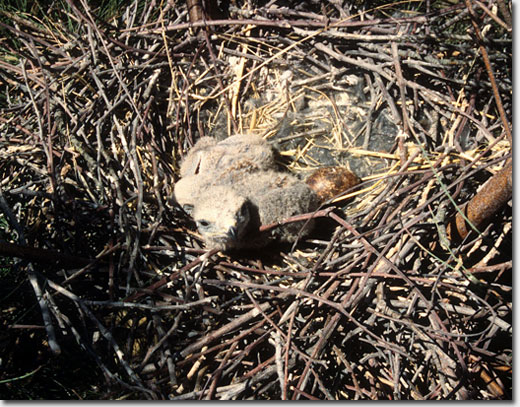Protected white-tailed kites build three nests at main site
White-tailed kites ( Elanus leucurus ), a protected raptor species, have built nests at three locations at the Laboratory. The nests are in trees near the laser corporation yard along the northern boundary of the site, the Arroyo Las Positas near Bldg. 696 and the storage yard near Trailer 6199C.
Anyone planning programmatic activity within 250 meters of the nests should contact Laura Burkholder (4-6795) or Lisa Paterson (3-2341) of the Laboratory’s Environmental Protection Department to ensure that activities do not cause failure of the nests.
"Over the years we have been very successful in working with people and projects to protect the birds, with little or no impact to operations," said Burkholder, who, like Paterson, is a wildlife biologist.
White-tailed kites were expected to become extinct in California in the early 1930s, but state and federal protective measures helped the birds make a significant comeback. White-tailed kites — which measure 14 to 17 inches and can have wingspans of more than three feet — can be found in agricultural areas, grasslands and other open land or sparsely wooded areas in the western United States and parts of Central and South America. Today, the birds are common throughout most of California. However, there is conservation concern for the species because of possible declines in some areas since the 1980s.
"Employees lucky enough to catch a glimpse of this exciting bird might see it rapidly flapping its wings while hovering in place above the ground, looking for prey. That’s a characteristic hunting style," Burkholder said .
White-tailed kites prefer to hunt for small mammals such as mice and voles, soaring or hovering above open areas and then swooping down onto their prey. The word kite comes from an old English word meaning to shoot or go swiftly. The child’s flying toy made of wood and paper was named for these birds.
The Lab’s main site provides attractive nesting and foraging opportunities for the white-tailed kite. The birds have been documented foraging and nesting at the Lab’s main site since 1994. They have historically nested in tall trees along the north and east buffer zones and in some interior trees, foraging within the buffer zones and in nearby fields.
White-tailed kites generally breed between February and April, with young birds fledging — becoming capable of flight — from June to July. The typical clutch size (number of eggs in a nest) is four eggs. Some kite pairs may nest a second time (double-clutch); the nesting season then may extend into August.
The white-tailed kite is a fully protected species in the state of California and federally protected by the Migratory Bird Treaty Act, a federal law that protects native species. Protecting nesting kites — such as those at the Lab — contributes to the birds’ successful breeding and to their conservation. Lab wildlife biologists will monitor the nests on site to determine timing of fledging and nesting success.






